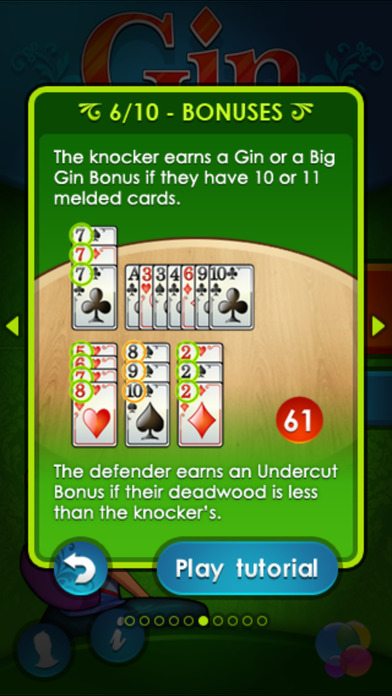

Don’t for example hang on to King, Queen or 8, 6. If you hold two cards of the same rank the chance of getting a third is about the same as of securing a sequence – provided that the pair of cards you hold are capable of being extended at either end. Which to keep and for long is a matter of judgment, but should take into account what lies in the discard pile. However, do not hold up for more than a turn or two – a gin is only worth double a knock.Ī hand can have several embryo melds. It is a good principle to knock as early as possible but if there is a chance of gin it may be better to hold up, since if your opponent knocks you could well score for the undercut. This will be invaluable in calculating the odds against getting a card you want: there is no point holding on to two Jacks if the other two have been discarded! It is just as important to watch your opponent’s play carefully: every up card is taken or rejected, and each card discarded, tells you something of the composition of his hand. It is imperative to remember every card in the up pile (recall that is squared up so that only the top card is exposed). If one player fails to score, the opponent’s score is doubled (“shut out”). Each player then adds 25 points for every hand won.

Running totals are kept with a line under each hand won, and the first player to reach 100 wins the game and scores an additional 100 points.
#Gin vs gin rummy plus
If the opponent’s total is equal to or lower than that of the knocker, the opponent scores the difference, if any, plus 25 for “the undercut”. If the opponent’s total is higher, the knocker scores the point difference between the two hands (for instance, if the knocker declares four, and the opponent declares 27, the knocker scores 23).

If the knocker’s total is zero – in which case the opponent may not lay off – this is gin and scores 25 for the knocker. When the opponent has laid off, both players declare the total value of their unmatched cards (“the count”). The purpose of laying off is to reduce deadwood which otherwise counts against the player. Provided that the knocker has deadwood the second player may now “lay off” any number of cards from hand to the exposed melds for example, by adding the fourth Jack to a set of three Jacks. The knocker discards and then puts the hand down, face up, divided into melds and deadwood. Knocking is done physically by rapping the table after drawing a card (but before discarding). Notice that A, K, Q of a suit is not a sequence since Ace ranks low.Įither player with unmatched cards (“deadwood”) that total 10 or less may, but is not obliged to, “knock”, thereby ending the hand. There are two kinds of meld: a set of three or four cards of the same rank (for example, Jacks) and a sequence (three or more cards of the same suit in order, for example – 7, 8, 9, 10, Jack, all of Diamonds). From here on, a player may take either the face-up card from the discard pile or the top card from the stock pile, in both cases surrendering a card from hand to the discard pile. If Younger does not want it, Elder now will draw the top card from the stock pile and replaces it with a card from hand face up to the discard pile (which is kept squared up so that the cards below it are not visible). If Elder does not want it, Younger may pick it up and replace it with a discard from hand. To form one’s hand into melds (sets) and reduce the number and value of unmatched cards.Įlder may now draw a card and take the face-up card from the deck and replace it with a discard from hand. It then suffered a decline, only to come back briefly to enjoy unprecedented publicity during the 1940s after Hollywood stars adopted it as their favorite game for filling in time between takes. It was popular in America during the early decades of this century. Gin is probably the best of the two-handed Rummy card games. The top card is turned over adjacent to it to start the discard pile. Each player is dealt 10 cards, singly and alternately, and the remainder of the pack is stacked face down to form the stock pile. At this stage only, when cards are equal, suits are ranked in the following order: Spades (high), Hearts, Diamonds, Clubs (low). Court cards count 10 each, Aces count 1 and other cards their pip values. Categories: Multiplayer Games The Basics of Gin Rummy


 0 kommentar(er)
0 kommentar(er)
